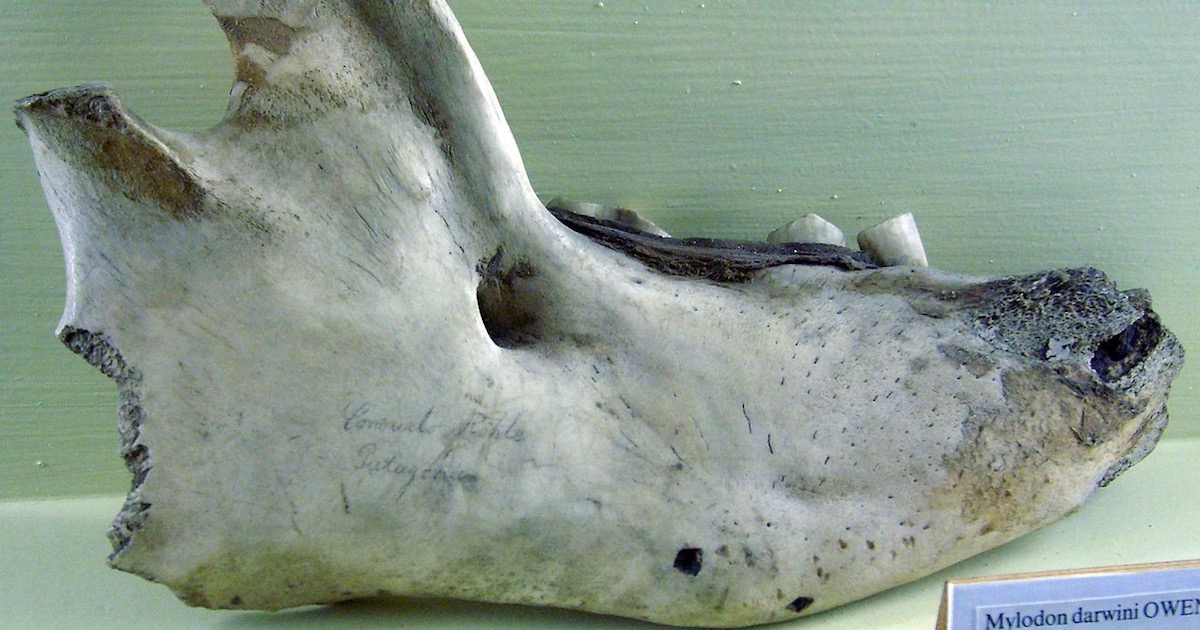 Evolution
Evolution
 Intelligent Design
Intelligent Design
Inexplicable Species and the Theory of Evolution


Editor’s note: We were delighted recently to introduce a new series, “Modernizing Darwin,” cross-posted at Shabbat.com, by Geoffrey Simmons, MD. The first post is here. Dr. Simmons is the author of What Darwin Didn’t Know and Billions of Missing Links. He is a Fellow with Discovery Institute’s Center for Science & Culture.
Man has been searching for fossils, or stumbling upon them, for millennia. The ancient Greeks and Romans saw the fossilized bones of giant creatures as proof that horrible monsters once walked the land or swam in the seas. Darwin utilized fossils to bolster his theory of evolution. He spent an enormous amount of time hunting down fossils and is rightfully known for a number of interesting finds, including the giant ground sloth Mylodon darwinii.
A Striking Absence of Transitions
Many modern authorities continue to use fossils as proof of evolution, chronologically lining up those which appear similar, yet the gaps have only grown more glaring with time. We now delve into the cellular level comparing chemical processes, electrical charges, and genetic differences. It seems to be a secret, but researchers know that it would take millions of internal changes for dinosaurs to evolve into birds, flat plants into trees, fish into amphibians. Note there are no half-fish/half-salamanders or one-third monkey/two-thirds humans, ever.
Upon close inspection, the absence of transitions (smaller steps) is striking. We should be up to our collective elbows with transitional species that once came about by trial and error, and failed to survive. Not so. Even for whales, the largest animal alive. We’ve been told repeatedly that transitional forms will eventually be found, but that hasn’t happened and the problems are steadily increasing in our awareness. Saying that two fossils with similar appearances, yet found thousands of miles apart, are related, begs the question.
Some whales can grow up to 100 feet long and weigh 200 tons. The rib cage of a blue whale is large enough to accommodate a minivan or small truck. Their hearts are the size of a Volkswagen Beetle. Every aspect is so massive. A few fossilized bones from their putative predecessors have been found. But the story is still mysterious, because of the changes required.
Darwin wrote that whales came about as a result of bears going to sea. He had to retract that statement after the first edition of On the Origin of Species was published. Some modern paleontologists say the whale’s ancestor must be the hippopotamus. Maybe because they are mammals and linger in the water most of their lives? But, otherwise they are strikingly (impossibly) different. Other coastal animals, that are now extinct, are also cited, but none of them could survive a day or two at sea. Of interest, the whale’s tail moves up and down, not sideways like fish. And, whales never had scales.
No one knows how blow holes came about, certainly not by small successive steps, or how the internal lungs became connected up to these holes in a way that prevents drowning. Or, how a massive communication center, found in their heads, came about. Or, how the ability to depressurize body segments during deep dives evolved. Calves are born tail first (they cannot go head first in case the process is too slow) and these newborns must rise to the surface immediately for air or else they will drown. The ability to swim must be present from the beginning. Trial and error would never have worked.
Not the Only Misfit
Whales are not the only misfit to smooth transitions, just the largest. The number of exceptions may actually be equal to the number of species on this planet. Standouts are kangaroos, woodpeckers, platypuses, giraffes, butterflies, octopuses, skunks, bombardier beetles, the red tide, dolphins, fireflies, tardigrades, sloths, and all micro-organisms. Maybe viruses, too.
Something besides unguided evolution is going on. In actuality, all living organisms are likely exceptions. Just breeding a horse into a faster horse doesn’t eventually change it into something fast like a cheetah. It’s simply a faster horse. The same goes for pet dogs to guard dogs. It’s true, natural selection does happen in a variety of situations, but it doesn’t change a species into another.
An incomprehensibly intelligent engineer and designer must be responsible.
Constructive questions and courteous comments will be appreciated.
Photo: Mylodon darwinii, lower jaw, Natural History Museum, Berlin, by FunkMonk [CC BY-SA 3.0 or GFDL], from Wikimedia Commons.
This post has been updated. —Ed.
